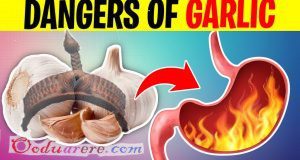Air pollution takes early toll on children
Air pollution can be bad for children — starting even before birth, a new study suggests.
Researchers studied exposure to polycyclic aromatic hydrocarbons, or PAHs, a form of pollution caused by burning gasoline, diesel fuel, home heating oil and coal. They found that prenatal exposure to these compounds was tied to changes in the structure of an offspring’s brains and to intellectual deficits and behavioral problems in childhood.
The researchers measured PAH concentrations in the air and in the blood and urine of 40 mothers in their third trimester of pregnancy, as well as in their children’s urine. They followed the children until they were seven to nine years old, performing magnetic resonance imaging tests on their brains.
The results are in JAMA Psychiatry.
The higher the exposure to PAHs, the more reductions the children had in the white matter surface of the left hemispheres of their brains. The amount of damaged white matter correlated directly with higher scores on measures of symptoms of attention deficit hyperactivity disorder and other behavioral problems.
Higher exposure to PAHs and white matter deterioration were also associated with lower scores on tests of processing speed, the ability to take in new information and respond to it.
“Everyone is exposed to these compounds,” said the lead author, Dr. Bradley S. Peterson, the director of the Institute for the Developing Mind at Children’s Hospital Los Angeles. “Pregnant women and young children are very vulnerable to environmental insults to the developing brain, and these exposures are likely having devastating effects.”
How not to catch a cold on a plane
What can you do to reduce the possibility of becoming sick when you are trapped on a plane with a sneezing, coughing fellow passenger?
Take heart. Not everyone on the plane will catch whatever illness is being spread by those sneezes, and if you are uncomfortably close to a sick person, you might be able to request a seat farther away.
Research published by the Centres for Disease Control and Prevention suggests that even a few rows of distance will cut risks significantly.
A small study of passengers on two long-haul flights carrying people infected with H1N1 influenza found that the transmission risk was increased by 7.7 per cent for those within two seats of people with symptoms. If passengers were just in the same row or within two rows, the risk was increased by only 3.6 per cent.
You can take a face mask that covers your nose and mouth. The CDC says that N95-type face masks,which filter out 95 per cent of particles, have been up to 90 per cent effective in warding off infection in experiments. Even a less efficient mask could be useful on a plane, the researchers said, based on a study of the transmission of H1N1 flu on another international flight.
And remember that not all disease transmission is airborne. The standard recommendations for washing your hands frequently will go a long way toward protecting you on a plane.
New York Times Service
 Ọmọ Oòduà Naija Gist | News From Nigeria | Entertainment gist Nigeria|Networking|News.. Visit for Nigeria breaking news , Nigerian Movies , Naija music , Jobs In Nigeria , Naija News , Nollywood, Gist and more
Ọmọ Oòduà Naija Gist | News From Nigeria | Entertainment gist Nigeria|Networking|News.. Visit for Nigeria breaking news , Nigerian Movies , Naija music , Jobs In Nigeria , Naija News , Nollywood, Gist and more








